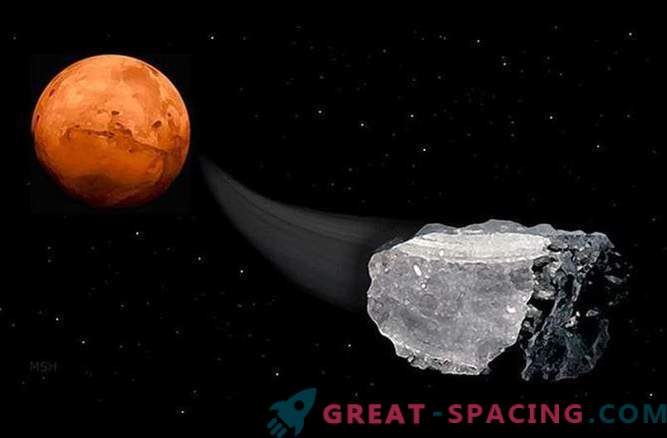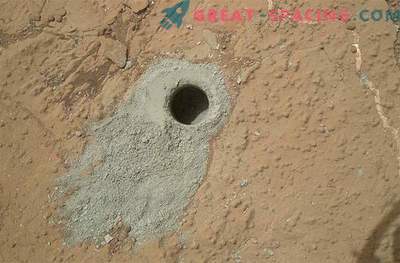
Meteorites from Mars found on Earth have traces of methane - this adds evidence to the theory that there is life on the Red Planet, scientists say. But the discovery of only one methane is not proof that life exists on Mars now or existed in the past.
"This discovery does not prove that life exists, or existed on Mars, the researchers warned. However, methane is a substance that can support biological activity on the Red Planet," said lead study author, Nigel Blamey, a geochemist at Brock University in St . Catharines, Ontario, Canada, wrote Space.com.
Methane is the simplest organic compound. This flammable gas without color and smell, was first discovered in the atmosphere of Mars in 2003 according to Mars Express (spacecraft of the European Space Agency). NASA's Mars Rover Curiosity also discovered a fleeting burst of methane at its landing site last year. Most of the methane in the Earth’s atmosphere is produced by various forms of life, for example, cattle when digesting food. However, methane can be obtained without the presence of living organisms, for example, methane is released during volcanic activity.
To shed light on the nature of the origin of methane on Mars, Blamey and his colleagues analyzed pieces of soil that detached from Mars through cosmic influence, and subsequently landed on Earth in the form of meteorites. About 220 pounds (100 kg) of Martian meteorites were found on Earth. Scientists have focused their attention on six meteorites from Mars, which serve them as examples of volcanic rocks. They collect samples, weighing about one quarter of a gram from each meteorite - a little more than 1 carat. All samples are taken from the inner parts of meteorites, this is done to avoid pollution by the Earth’s environment.
The researchers found that all six released methane and other gases upon landing, probably gases were released from small internal cavities. “The biggest surprise for us were these important signals about the presence of methane,” said Blamey.
Chemical reactions between Martian volcanic rocks and the planet’s environment can release methane. Although the dry rarefied air of Mars makes its surface hostile to life, the researchers suggest that the Red Planet under the surface is more habitable. They noted that if methane is available under the surface of Mars, the microbes can live there, because some bacteria can exist in extreme conditions and on Earth.
"We did not find life, but we found methane, which can potentially support the existence of microorganisms below the surface," said Blamey.
Blamey now hopes to analyze more Martian meteorites. He and his colleagues described in detail their findings on June 16 in the journal Nature Communications.











































